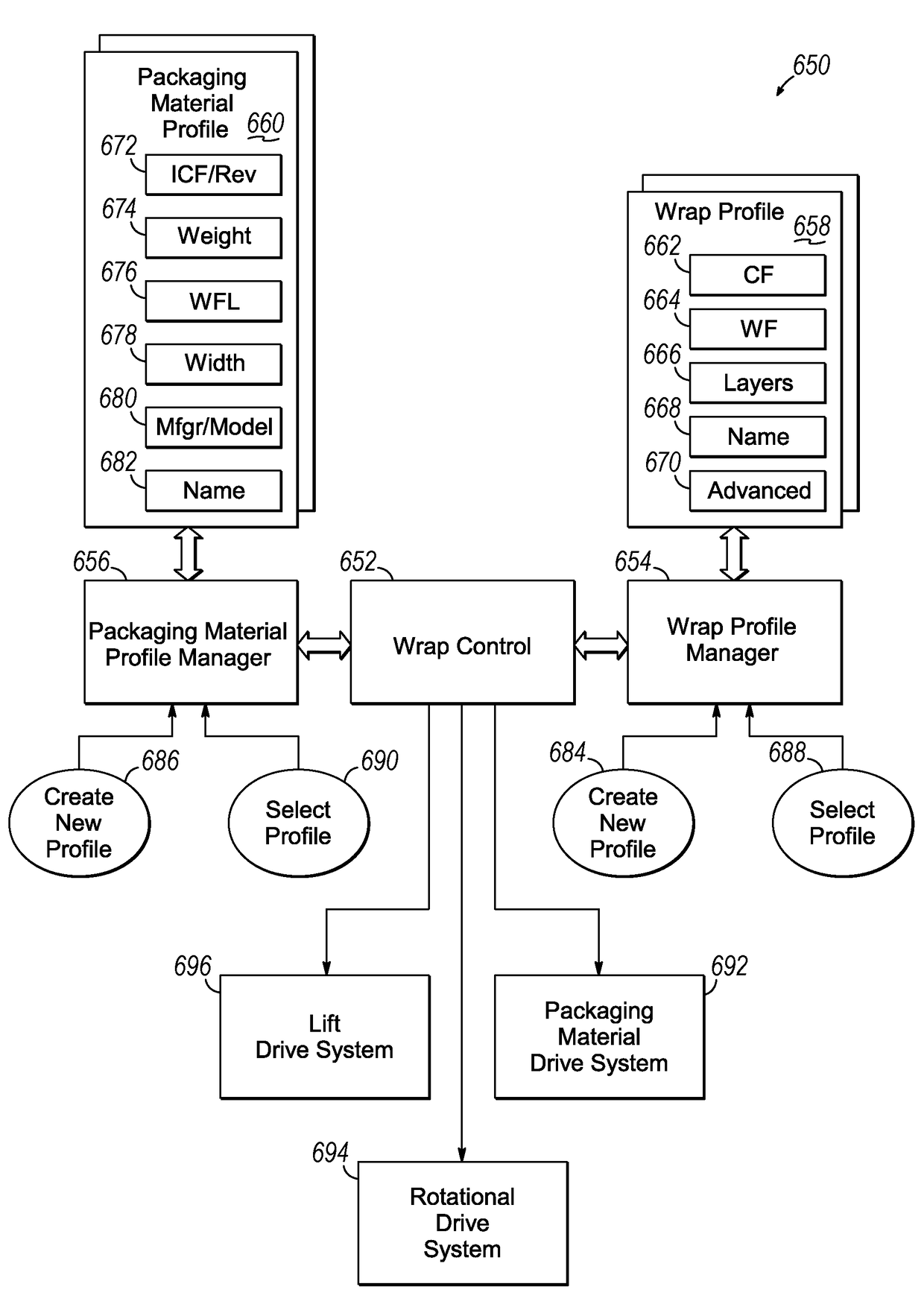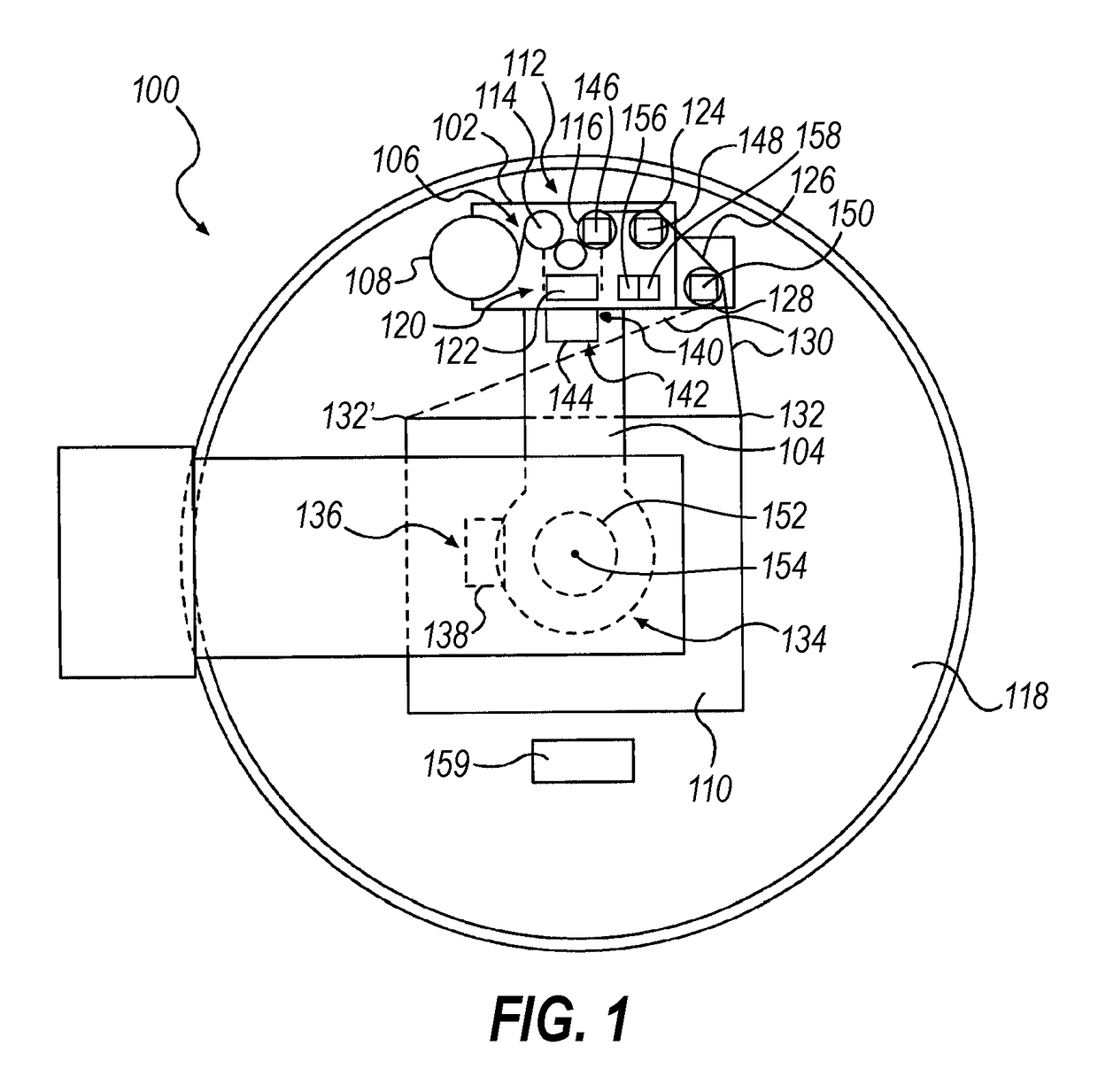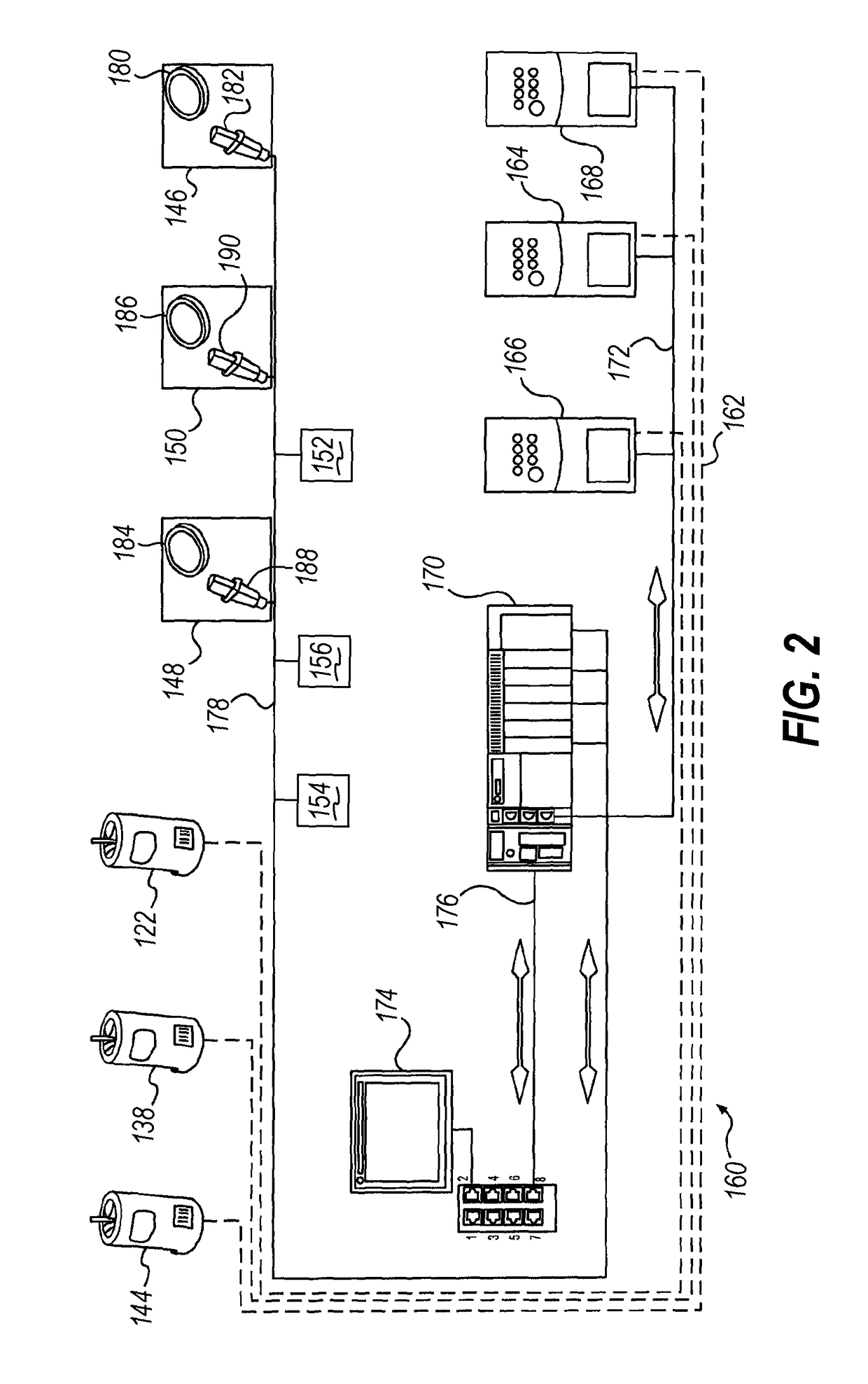Containment force-based wrapping
a technology of containment force and wrapping, applied in the field of wrapping loads, can solve the problem of reducing the amount of operator expertise required to properly configure the wrapping apparatus, and achieve the effect of reducing the amount of operator expertis
- Summary
- Abstract
- Description
- Claims
- Application Information
AI Technical Summary
Benefits of technology
Problems solved by technology
Method used
Image
Examples
Embodiment Construction
[0039]Embodiments consistent with the invention utilize various techniques to simplify the control of a wrapping apparatus and to enable more consistent application of packaging material such as film to a load. Prior to a discussion of the aforementioned concepts, however, a brief discussion of various types of wrapping apparatus within which the various techniques disclosed herein may be implemented is provided.
[0040]In addition, the disclosures of each of U.S. Pat. No. 4,418,510, entitled “STRETCH WRAPPING APPARATUS AND PROCESS,” and filed Apr. 17, 1981; U.S. Pat. No. 4,953,336, entitled “HIGH TENSILE WRAPPING APPARATUS,” and filed Aug. 17, 1989; U.S. Pat. No. 4,503,658, entitled “FEEDBACK CONTROLLED STRETCH WRAPPING APPARATUS AND PROCESS,” and filed Mar. 28, 1983; U.S. Pat. No. 4,676,048, entitled “SUPPLY CONTROL ROTATING STRETCH WRAPPING APPARATUS AND PROCESS,” and filed May 20, 1986; U.S. Pat. No. 4,514,955, entitled “FEEDBACK CONTROLLED STRETCH WRAPPING APPARATUS AND PROCESS,”...
PUM
| Property | Measurement | Unit |
|---|---|---|
| rotating mass | aaaaa | aaaaa |
| thickness | aaaaa | aaaaa |
| width | aaaaa | aaaaa |
Abstract
Description
Claims
Application Information
 Login to View More
Login to View More - R&D
- Intellectual Property
- Life Sciences
- Materials
- Tech Scout
- Unparalleled Data Quality
- Higher Quality Content
- 60% Fewer Hallucinations
Browse by: Latest US Patents, China's latest patents, Technical Efficacy Thesaurus, Application Domain, Technology Topic, Popular Technical Reports.
© 2025 PatSnap. All rights reserved.Legal|Privacy policy|Modern Slavery Act Transparency Statement|Sitemap|About US| Contact US: help@patsnap.com



